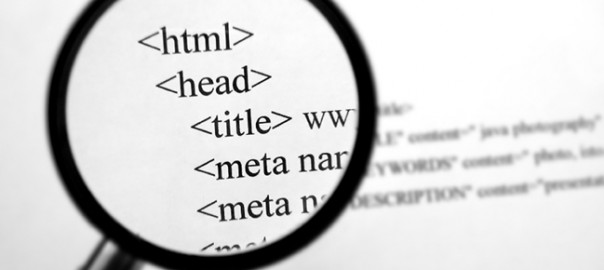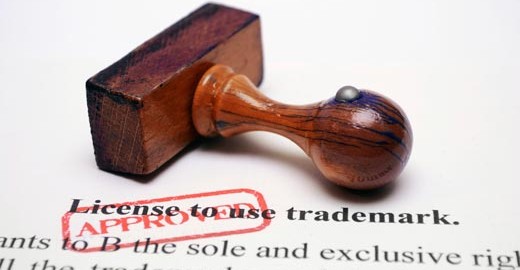The 6 year legal battle between flower delivery giant Interflora and M&S has taken a new twist following the Court of Appeal’s latest appeal ruling in the case (Interflora Inc & Anor v Marks and Spencer plc [2014] EWCA Civ 1403). The appeal was brought by M&S in an effort to overturn the decision reached at trial last May by Mr Justice Arnold who held that M&S had infringed Interflora’s trade marks.
Background
Interflora originally brought its infringement claim against M&S in the High Court back in 2008. It had objected to M&S paying Google for the right to use the keyword “interflora” as a search term to help generate adverts promoting its own (i.e. M&S’s) competing flower delivery service. As a result of M&S’s actions, consumers using “interflora” as a Google search term were led to a search results page in which M&S’s service was prominently advertised.
Interflora argued that M&S was infringing its very well-known Interflora trade mark and that it was unfair for M&S to use someone else’s brand in this way to drive internet traffic to its own competing service. To add insult to injury, in order to stop M&S’s advertising appearing higher up the search results page than their own, Interflora were forced to spend large sums of money “outbidding” M&S for the right to use their own name as a paid for keyword. Google, meanwhile, was laughing all the way to the bank.
The case has been very hard fought on both sides and a number of interim rulings have been made both before and since the trial. Indeed, prior to it reaching trial in 2013, there had already been several reported High Court decisions in Interflora including two trips to the Court of Appeal and a reference to the Court of Justice of the European Union (CJEU).
The CJEU had also, in the meantime, issued judgments in a number of other keyword advertising cases and in doing so has created a new test for infringement in such cases. According to the CJEU, there will be infringement if the keyword advertising “does not enable [average consumers] or enables them only with difficulty to ascertain whether the goods or services referred to in the advert originate from the [trade mark owner, a connected party]..or a third party.”
At the trial, applying that test, the judge Arnold J narrowly found in Interflora’s favour. In a substantial judgment running to over 300 paragraphs, he ruled that there had been an infringement of Interflora’s trade mark by M&S through the use by M&S of the Interflora keyword.
However, M&S appealed the decision and on 5 November 2014, the Court of Appeal gave its judgment in the appeal – itself a lengthy affair running to 189 paragraphs spread over 69 pages!
The result of the appeal
In its judgment, the Court of Appeal has accepted many of M&S’s criticisms of the judge’s decision- making process and his approach to the burden of proof. It has upheld his approach on other matters such as the correct application of the “average consumer” test. But it has allowed M&S’s appeal.
The finding of infringement made at trial has thus been set aside. However, somewhat unusually, the Court has not substituted a decision of its own on the question of infringement (which in this case
could well have resulted in the dismissal of Interflora’s action). Instead, the Court has chosen to send the matter back to the High Court for a retrial.
The implication is that if the trial judge adopts the approach approved by the Court of Appeal, this will result in a different decision by the judge compared to last time. But despite this, the Court did not feel quite able to save the parties the time and cost of another trial. So the possible outcome remains uncertain. Although the trial judge will have to disregard some of the evidence that had previously assisted Interflora and abandon the idea that M&S bears any burden of proof, this does not mean that M&S’s defence will automatically succeed.
It does seem incredible that this case could have lasted so long and that even now, after so many hearings and appeals, we still do not know who has won. It remains to be seen whether the High Court will reach a different conclusion when the case is heard at trial for the second time – and whether that ruling will itself be appealed!
Meanwhile, there must also be a possibility of an appeal to the Supreme Court or even another reference to the CJEU.
Strong support for the CJEU
One of the difficult issues facing the Courts throughout – both in this case and more generally in similar “adwords” cases – has been reconciling the apparently irreconcilable judgments of the CJEU in its previous case law on keyword advertising. In particular the judgments in Google France and Die BergSpechte
To the surprise of many IP lawyers, the Court of Appeal has now endorsed that case law (described at one point earlier in the proceedings as “unfathomable” as making “no sense” by M&S’s leading counsel). Instead, the Court appears to have glossed over some of the problems created by the CJEU which have since troubled both judges and IP lawyers alike. For example, why is the CJEU’s test for trade mark infringement exactly the same for infringement under Article 5(1)(a) of the Trade Marks Directive as it is for cases under Article 5(1)(b) – the key point being that both provisions have clearly different requirements. One requires a likelihood of confusion and the other does not. Does it really make sense to treat them as being the same as the CJEU has apparently done and to ignore the wording of the legislation?
The Court of Appeal has now answered this question in the affirmative and basically said that this doesn’t matter – at least in the context of keyword advertising cases. It is all rather puzzling.
The Court has also confirmed that Arnold J’s analysis of the conundrum created by the CJEU is wrong and that the burden of proof in a keyword advertising infringement case lies squarely on the trade mark owner not the alleged infringer.
The death of “initial interest” confusion”?
Another of the issues touched on by the Court of Appeal in its lengthy 69 page judgment in Interflora, isthe subject of so-called “initial interest confusion” (IIC)
This is a doctrine that is well established in the US and which has gained some traction in recent years, at least in the UK, following another decision of Arnold J in OCH Ziff Management v OCH Ziff Capital.
IIC is a term used to describe a scenario in which a person may be initially confused by the use of a sign identical or similar to a trade mark prior to making a purchase of the goods or services involved (as opposed to still being confused at the point at which they actually make the purchase).
The judge in OCH Ziff held that IIC was good enough to constitute confusion for the purposes of both passing off and trade mark infringement. (By the same token, so called “post-sale” confusion has also become an accepted way in which trade marks may be infringed).
However, in Interflora, the Court of Appeal has gone out of its way to frown on the whole doctrine of IIC and the Court has expressly stated that IIC should play no part in trade mark infringement cases – at least where those cases involve disputes about keyword advertising.
As the Court’s observations about IIC were specifically directed at cases concerning keyword advertising, this does not necessarily mean that IIC is now dead in other trade mark cases. But it is certain that the comments of the Court in Interflora will be relied upon by future defendants who are faced with claims based on IIC. The Court of Appeal has seemingly reopened an aspect of the law that was thought to have been fairly well settled.
The “average consumer”
One of the issues that has occupied considerable judicial time in the Interflora case is the correct approach to be adopted by the Court when assessing the question of likelihood of confusion or the new CJEU-created test for infringement in keyword advertising cases. It is well established that these have to be judged by reference to the “average consumer who is reasonably well informed and reasonably observant and circumspect”. But exactly how this doctrine should be applied by the Court remains a contentious subject.
In Interflora, M&S argued that the judge had been wrong to take into account that although the majority of average consumers were unlikely to be confused, a significant percentage of them nevertheless were. The M&S approach was that once you had identified who the notional average consumer was, it was only that person’s perception that mattered. So the judge should have looked at the question from the perspective of the notional average consumer and answered the question one way or the other – in the negative.
The Court of Appeal rejected this approach. The Court’s conclusions on the application of the “average consumer” test were summarised thus:
“…we think it makes no difference whether the question is asked and answered from the perspective of the single hypothetical well-informed and reasonably observant internet user or whether that hypothetical person provides the benchmark or threshold for the purposes of identifying the population of internet users whose views are material.”
“…We do not accept that a finding of infringement is precluded by a finding that many consumers, of whom the average consumer is representative, would not be confused. To the contrary, if, having regard to the perceptions and expectations of the average consumer, the court concludes that a significant proportion of the relevant public is likely to be confused such as to warrant the intervention of the court then we believe it may properly find infringement.”
“…we consider the judge was entitled to have regard to the effect of the advertisements upon a significant section of the relevant class of consumers, and he was not barred from finding infringement by a determination that the majority of consumers were not confused….”
This part of the Court’s ruling is important for would-be claimants because it underlines that you can still win an infringement case even if only a minority of the relevant population are confused or (at least in the case of keyword advertising cases) unclear as to the origin of the advertisement or advertiser.
Negative-matching
Having allowed M&S’s appeal on liability, the Court went on to comment on the follow up judgment that had been made by Arnold J when he came to make the orders implementing his decision on liability.
Interestingly, the Court of Appeal has held that it is appropriate in these types of cases that where an injunction is imposed to stop the use of a trade mark as a keyword, the infringer can also be required to set up “negative matching” against the trade mark on its Google account. This is because due to the way Google works, in some cases even if M&S were to be barred from using “interflora” as a keyword, it nevertheless remains possible that where a consumer enters the word “interflora” as a keyword, this may still bring up M&S adverts. The Court agreed with Arnold J’s analysis that in such cases, the infringer should ensure that the offending term was “negative matched” by Google so that this would not happen.
This is a somewhat surprising (if pragmatic) part of the ruling but appears to be a sensible one as it should reduce the prospect of further disputes in cases where a party has been banned from using an infringing keyword.
Where next for this case?
It is a sorry state of affairs that after so long and despite so much judicial water having gone under the bridge, the parties still do not know where they stand. One can only imagine how much money has now been spent on legal costs in this case.
All in all the Interflora case is not exactly a good advertisement for IP litigation. Lawyers will have their own views as to where the blame lies for this sorry state of affairs. But one of the obvious issues here is surely the fact that the Courts are having to apply to the modern-day internet age, trade mark laws that were drawn up more than 25 years ago. That is clearly proving difficult, both at European and UK level.
Meanwhile, notwithstanding the Court of Appeal’s supportive tone, the debate about the qualities of the CJEU’s jurisprudence in this area will surely continue.





